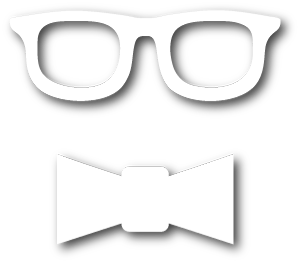By Michael W. Harris
 The word “curated” or “curation” is perhaps a bit overused these days. We talk a lot about how we “curate” our photos on Instagram or Facebook, or “data curation” for academics and scientists. Or how we might “curate” our collections for display in the home. Believe me, I am just as guilty of these things as the next person, if not more so, and I am not saying this is good or bad (yet). However, what I do believe is that the word itself, “curate,” has become one of those buzzy words, and whenever I heart it I just want to go all Inigo Montoya: “You keep using that word…”
The word “curated” or “curation” is perhaps a bit overused these days. We talk a lot about how we “curate” our photos on Instagram or Facebook, or “data curation” for academics and scientists. Or how we might “curate” our collections for display in the home. Believe me, I am just as guilty of these things as the next person, if not more so, and I am not saying this is good or bad (yet). However, what I do believe is that the word itself, “curate,” has become one of those buzzy words, and whenever I heart it I just want to go all Inigo Montoya: “You keep using that word…”
So what does it mean, to curate? The simple answer, per the Interwebs, is to, “select, organize, and look after the items in a collection,” which pretty much encompasses most of what people do. Yet, when we think of curation in terms of on-line presence, with the exception of museum collections, we are talking more about how we present our lives for other to see via Instagram or Twitter. A carefully selected, edited, sanitized, and filtered version of our life.
Or as we now say: curated.
But beyond the lingo that we now use for this act, I would like to consider why we do this and its possible implications. To be certain, this process of curating, indeed “cleaning up” our lives for others to consume, is not new. From tidying the house for guests, to figuring out what books to have on our shelves, or newspapers and magazines to have strategically lying about, pictures on the wall, etc., we have been “curating” our lives and spaces for display to others for a long time. I do it a lot, especially since I very consciously and openly admit to checking out the bookshelves of friends and acquaintances when I first visit their home and “silently judge” them not only on selection but also on organization (I am a librarian after all!).
So if this newly defined on-line “curation” is simply an extension of what we were already doing IRL (or “In Real Life” for all you non cool kids out there), is it a big deal? As with all things: maybe?
Just as social media has amplified our stupidity, so does it supercharge our relentless need to make ourselves look better in comparison to our neighbors and contemporaries. From Instagram influences maxing out credit cards and draining bank accounts, to #blessed lattes, when we carefully curate our lives via social media channels, emphasizing the good while downplaying the bad, we not only curate an unhealthy and unreal ideal of life (akin to unreal body expectations from models with strict diets, exercise regimens, and copious amounts of make-up and photoshop), we also, I believe, reinforce expectations of what we should think our lives should be when we ingest others’ curated social media channels. We set ourselves up for disappointment, making us unable to cope with inevitable setback. We will go chasing experiences that surpass the last in some neverending cycle, like a gambler spending more and more money chasing their losses in an effort to simply break even.
* * *
So if “curating” our lives can be bad for the audience and curator…can it actually have some benefit?
As with so many obsessions, all things in moderation! If we can consider a healthy relationship with #goals—trips we want to take, experiences we want to have, and even, yes, how we want others to see us—we need to also have a strong sense of our authentic self within. As the Greeks said: “know thyself.” But that doesn’t mean we can’t seek to change, but if there is a gap between who we want to be and who we are (or think we are), we must proceed with caution. Having goals to inspire us, to learn and to change, is healthy. It is a great way to keep our minds and bodies active as we age. It helps to keep us motivated.
However, it should never be a detriment to our financial or mental health. If something causes us to take on too much debt or, if by not measuring up to some image (even while projecting the opposite of that on social media), causes us to internally berate and put ourselves down…well that is where curation, like so many things, can become toxic.
In our pursuit to “keep up with the Joneses” (or whatever celebrity you wish), we should not also make ourselves miserable. It is a trend that has been around for decades, if not centuries, but it has been accelerated in the era of smartphones and social media.
And I am not immune.
* * *

So I have already talked about my love of pens and gins, and I have many more posts planned on that topic, but I will readily admit that there is an element of lifestyle curation to it. To say nothing of how I present it on my relatively new Instagram account (though that has honestly turned more into a venue for pretty pictures from my walks). And even on Facebook or Twitter I tend to avoid “bad” news posts, or overtly political rants. While I will occasionally venture into those seas, I tend to carefully moderate what I say these days. I curate an on-line image and identity that, to a large part, tries to mirror who I believe myself to be: a nerdy, centrist guy, who certainly enjoys some of the finer things, but who is also fairly down-to-earth.
Am I actually that person? I am not sure, but it is who I try to be. I cultivate interest and hobbies to support that view and emphasize them in posts. Nevertheless, these posts also leave out my numerous faults and failings. However, I at least try to acknowledge them, address them, and move on (that last part is the hardest as I have a difficult time forgiving my many mistakes). In the end, though, I do believe in presenting the best version of myself to other, but doing so in an authentic and considerate manner (i.e. – curate interests that actually intrigue me, not ones that I think will draw people or get clicks).
Furthermore, doing so also, ideally, helps me to actually become that person. The old “fake it ‘till you make it” ethos. We must first imagine who we want to be before we can become that person. It can be motivation for self-improvement. But just like a diet or any other lifestyle change, we must have reasonable goals and expectations. The self-awareness to set good goals, strong self-identity to not allow small setbacks to break our stride, and also know how to strike a balance between “good enough” and not being blinded in pursuit for unattainable perfection.
* * *
In an always on, social media saturated, carefully curated world, all of us are on display. As many have said, “you are the product.” As such, we must develop a strong sense of self-identity in order to not lose ourselves in the Quixotic quest to live up to some ideal lifestyle such as “seen on TV” or Instagram
The ability to curate our lives on social media has taken something that was largely a private activity (curating our personal living space, with maybe our clothes or office being more publicly curated) and made it almost entirely public. And in this blurring of the public/private curated spheres, there exists both the danger of loss of self along with the motivation to also strive to be our best self.
How we negotiate and thread that needle, and if the benefit is worth the risk, is an open question whose answer the jury of public opinion is still out on.







I liked it 🙂
Me too